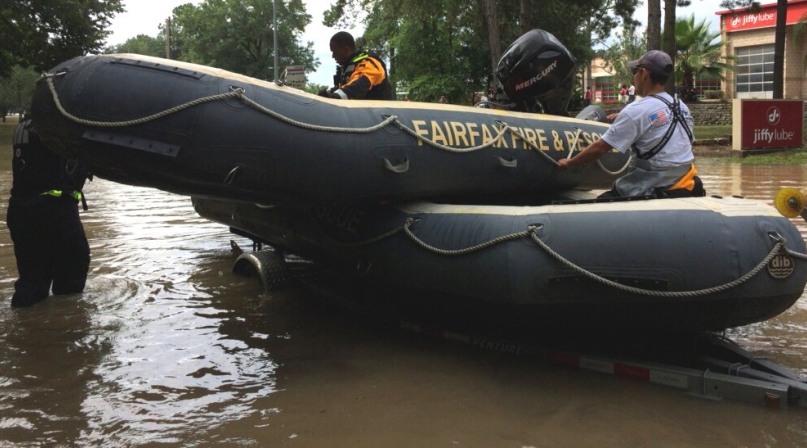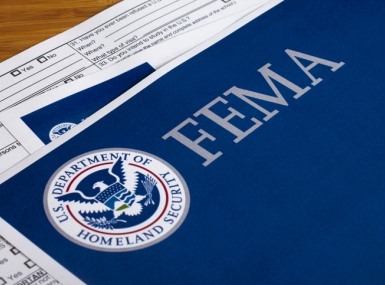Preventing Major Disasters

Like every one of us, the horrific hurricane, wind and water damage in much of Texas compels our attention no matter where we live. Even now, I am awaiting specific predictions about the path of oncoming Hurricane Irma. I think back to my experience working for many years as a county and city-appointed official in California and Florida. I recall with unexpected clarity events like Hurricane Andrew, Hurricane Katrina, earthquakes and huge mountain brushfires. In all of these times of fear and uncertainty, there remain some common grounds for hope and pride.
Learn More
Counties’ hurricane preparations extensive, varied
Wildfires put lives, health, ecology, property values at risk
As one Texas official put it in a media interview: “Texas is a state, but it is also a state of mind.” Despite the mega-cost and time associated with remediation cleanup and rebuilding, we will all think about the acts of heroism and sacrifice neighbors, especially local government employee neighbors, showed.
We also think about what could have been done, but wasn’t; what we should have done as individuals to better prepare, but didn’t; and what we wish was in place before the next “big one” hits. Certainly, there will be other “big ones” coming in the future. Certainly, it shouldn’t take hordes of lawyers filing tens of thousands of lawsuits to make us act now to put off the day when we again lament what we could have, should have and would have, done to ease the harm. Here are some thoughts on that subject.
We are grateful for the Herculean rescue efforts which affected many thousands of families in each of the disaster areas. Those efforts were led by local government employees at first before other forces from State, such as the National Guard, arrived on the scene. However, there were at least an equal number of neighbors, friends, private organizations, and charities like the Red Cross hard at work. They produced results that should make all of us proud to be part of the American family.
Once giant disasters strike, crews are also marshaled in many different states to come to the aid of the people in California, Texas, Louisiana, Florida, New Jersey or wherever the monster hits.
Besides the gratitude we owe to those who help instead of whine and blame others, there is a critical realization for us to think about in local government. It is counties, cities, utilities and special districts that lead the efforts at responding to these disasters.
It is not the federal government that initially responds, despite the fact that everyone looks to the president to hold a news conference expressing sympathy and offering support. The Federal Emergency Management Agency (FEMA) is organized as a responding agency, more than a preventive one. In fact, FEMA is swamped or flooded if you will, by these mega-disasters just as much, at least metaphorically, as the communities which may be underwater. It literally takes years, sometimes many years, for the paperwork, the processing, the inspections and so much more to take place when FEMA rolls into town. Meanwhile, it is local government — that bears repeating, local government — that has the burden of response, rescue and offering hope to citizens. A presidential news conference or a flyover by Air Force One has symbolic value but not anywhere near the value created when a firefighter-paramedic arrives soon after the disaster to help your mom out of the flooded house.
It is the local governments that have the burden in responding to the need to set up shelters, provide food, health care, clothing and much more for the thousands who may be suddenly living in a world torn upside down. In my own post-hurricane management experience in both County and City Emergency Operations Centers (EOC), I have seen promises made by FEMA but results delayed. I have seen intricate recovery plans activated — plans created months or years before problems actually played out — with only partial success. That is because, as General Eisenhower reputedly said, “before the battle the plans are everything, during the battle the plans are nothing.”
Unfortunately, we lack the ability to send our draft plans into the belly of the beast and ask the hurricane or the earthquake to review them and sign off that they are going to be accurate and are going to be successful. Rather, it takes skilled public servants to rally hope in time of despair and to create the environment in which maximum human effort produces the best results.
Most of our efforts, commendable as they are, focus on reactive responses. It is the primary job during “normal” times, for example, for police officers to respond to calls perhaps 80 percent of the time and engage in discretionary patrols for most of the rest of their shift time. We have plans which focus on response – certainly an absolutely essential and critical part of crisis management.
What we do not focus on, in this writer’s experience and judgment, with sufficient foresight, is longer range anticipation well before the need to clean up anything in the first place. This is the work which, if we focused much more attention on, would mitigate or in many cases perhaps prevent the disaster.
Many examples can be cited, but in this brief article here are a few to think about. Not only is local government the incident commander in disasters, but it is these public agencies which also command long-range land-use planning. In effect, communitywide quality of life decisions are made at the local level.
Should urban sprawl to a massive extent be allowed to develop in a flood plain? Should homes continue to be built in areas which may be below sea level or lack adequate storm drainage capabilities? Should high-density buildings be allowed to rise up all over earthquake-prone areas? How about poorly built mobile homes in high-risk hurricane areas? What about lack of tough health, safety and chemical contamination prevention safeguards – apparently missing at the state level in Texas? When flood insurance is not included in all home purchase transactions, is it not all taxpayers who suffer and not just those individuals who should have, but didn’t purchase the coverage?
In other words, should we not be devoting huge resources to prevention and mitigation rather than response? This writer believes the answer should be a loud “yes!” It is no different from how we respond or should respond to other areas of our personal protection.
The most unfortunate examples come in the health care arena. The large majority of the money any of us spend on health care comes in the form of intervention, after health care disasters have struck. If we spent a lot more money on prevention and not let lobbying or other political pressures get in the way of doing what is right in our own long-term best interests, we could prevent huge numbers of unnecessary deaths.
Lung cancer or automobile crashes stem in large part from preventable actions we could take, like seat belt use and stopping the “infection” of tobacco use. If we spent a lot more on education to prevent trouble including the troubles created by bullying or opioids, a huge amount of suffering would be mitigated. If we reduce the amount of violence spewed at us constantly by the media and struck a better balance between “action adventure” on prime-time TV and education, the amount of violence in the society could be reduced.
These ideas will fail miserably if they are not concerted, ongoing and vigorously supported by the industries involved in these areas, including health care or media production, as well as government. They will not succeed unless we have the will to realize that it is prevention as well as ex post facto responding which will save lives and save our community.
I believe that people around the world understand the value of prevention and how much better things would be if only actions were taken now to put off the day when massive trouble struck, just as most people agree with scientists in the climate change debate. However, this feeling crashes into a shortage of education and political willpower to confront vested interests and short-term thinkers.
We also do harm to ourselves by not stepping back and flying over our community organizations from 40,000 feet. Regrettably for those who plan congressional or state legislative districts, there is no such thing as a “hurricane district” in which the storms agree to stop at jurisdictional boundaries. Local government in disasters is a hero, but how can we do our best in communities where there may be one county government but two dozen or more city governments, not to mention other jurisdictions? Many of these agencies choose to have separate police and fire rescue services. Perhaps these governments would better serve the public if there was a joint powers agreement rather than dozens of separate badges, logos and command structures.
Perhaps regional emergency management jurisdictions rather than separate city and county responses, would be helpful. Patients awaiting rescue really don’t care what logo adorns the ambulance. A national volunteer corps of medical students, supported by infrastructure from hospitals, universities and government agencies would provide support. After all, many people may have chronic medical conditions and can’t access their doctors. The electrical power to keep their refrigerators, and therefore their insulin supply for example, may not be available. The same is true for the elevators in multistory senior living facilities thus preventing residents from leaving their apartments.
Finally, being in the middle of a massive disaster like Texas flooding is not the time to criticize the heroism and planning efforts which have gone into the immediate responses. It is very much the time, however, to plant the seeds for a local, regional and national “stand down” day, or days. Not unlike what the military does in responding to ship collisions or repeated aircraft failures, this would be a time for planners to join with emergency managers and citizen blue-ribbon panels to work hard to avoid greater horrors that might come in the future.
Not that any of us need more irony, but as I am dictating this article the power has just failed at my house in the midst of a sustained rainstorm. That’s the bad news. The good news is that thanks to knowledge I have gained in local government emergency management, my emergency whole house generator kicked in within 10 seconds. My computer never missed a beat! Now if only Alexa will come back online!
Attachments
Related News

States file lawsuit challenging FEMA’s new rules on emergency management grants
On November 4, a coalition of 12 states filed a lawsuit against the U.S. Department of Homeland Security (DHS) and the Federal Emergency Management Agency (FEMA), alleging that recent changes to key emergency management grants are unlawful and could disrupt state and local preparedness efforts.

County Countdown – Nov. 4, 2025
Every other week, NACo's County Countdown reviews top federal policy advocacy items with an eye towards counties and the intergovernmental partnership.
FEMA bill staffers offer insights into reform effort
NACo Intergovernmental Disaster Reform Task Force heard from staffers who helped shape a bill that would make dramatic changes to the Federal Emergency Management Agency.
